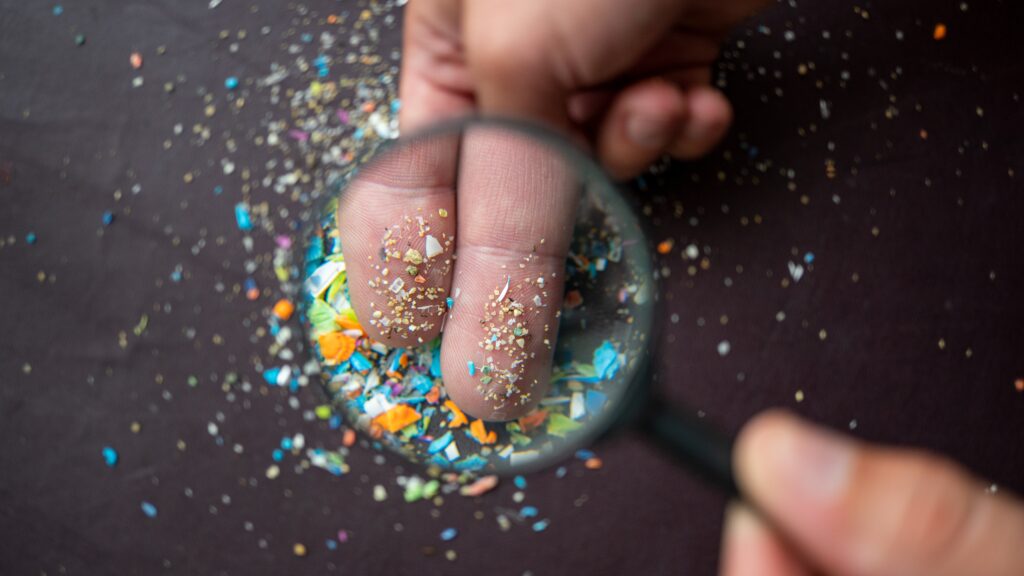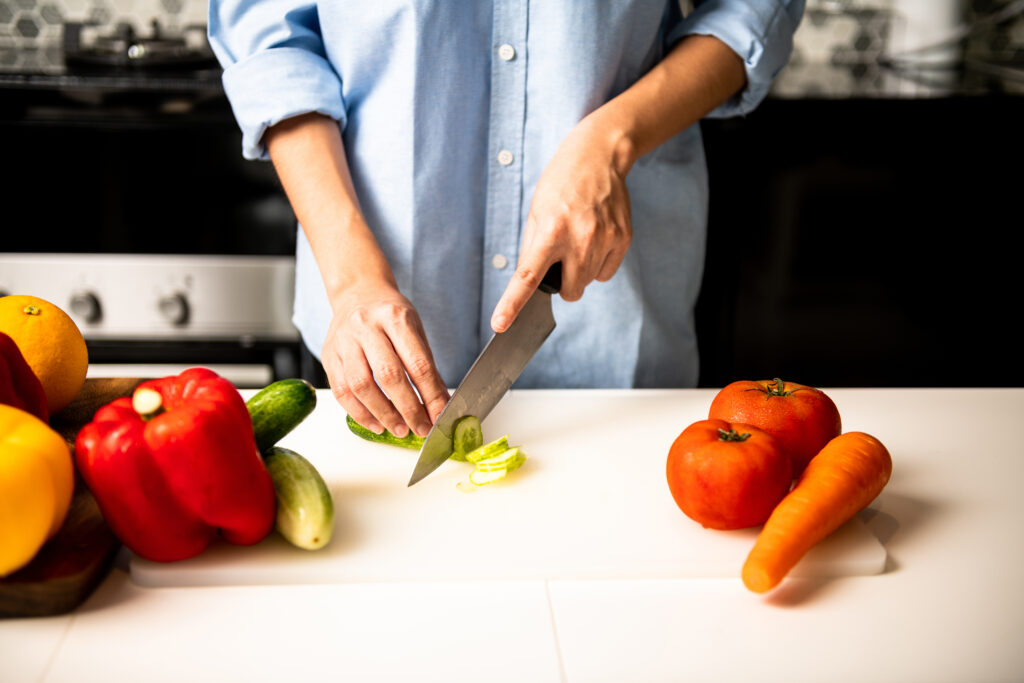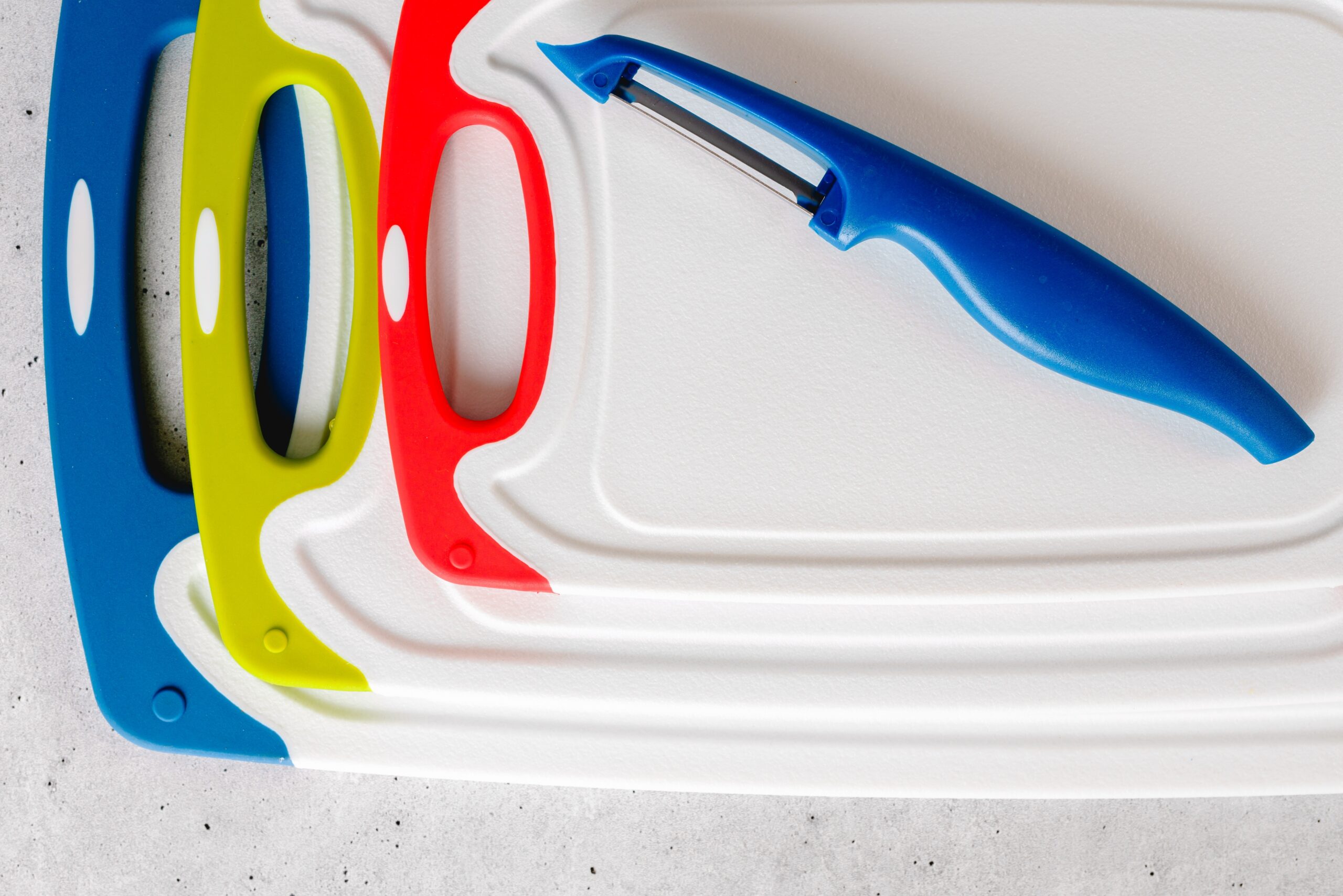Your morning routine is probably much like mine—grab the cutting board from under the sink, slice up some fruit for breakfast, maybe prep vegetables for tonight’s dinner. It’s such an ordinary part of kitchen life that you’d hardly give it a second thought. But what if that faithful plastic cutting board has been quietly adding an unwelcome ingredient to every meal?
Recent research has uncovered something rather startling about those convenient plastic cutting boards we’ve relied on for decades. Every time you slice, dice, or chop, tiny plastic particles are being released directly into your food.
Recent research published in Environmental Science & Technology found that people using plastic cutting boards could be exposed to 7.4 to 50.7 grams of microplastics annually from polyethylene boards, and 49.5 grams from polypropylene boards. This is roughly equivalent to eating 10 plastic credit cards per year.
This discovery comes at a time when we’re increasingly aware of how our daily choices affect our long-term health. The good news? There are excellent alternatives that might actually work better for your kitchen—and your wellbeing.
In this Article
The cutting board research that changed everything
The study that's got everyone talking came from researchers at North Dakota State University, who decided to investigate what happens when we use plastic cutting boards the same way we always have. They asked volunteers to simulate normal chopping motions—the kind of cutting you'd do when preparing carrots for a roast or onions for a stir-fry.
The results were eye-opening. Polypropylene boards released 5-60 per cent more microplastics by mass and 14-71 per cent more particles than polyethylene boards. But both types of plastic boards shed significant amounts of tiny particles with every cut.
Think about how often you use your cutting board. Every apple you slice, every piece of bread you cut, every vegetable you chop—each action releases microscopic plastic particles that end up in your food and, ultimately, in your body.
"We decided to run a preliminary study, and as we dug deeper, it became clear that this could be a groundbreaking investigation, shedding light on the often-overlooked world of microplastic exposure"
Himani Yadav, North Dakota State University researcher
What this means for your health
While researchers are still investigating the full health implications of microplastic consumption, the early findings are concerning enough to take notice. Research shows that microplastics can cause inflammation, oxidative stress, and may contribute to cardiovascular diseases, with older adults being particularly vulnerable due to declining physiological functions.

The concern isn't just theoretical. Australian research found that males between 18-64 years had the highest airborne microplastic exposure at 3,187 particles per year, and that's just from the air we breathe. When you add cutting board exposure to the mix, along with other sources like bottled water (which contains an average of 13 microplastics per litre in Australia, exposing Australians to approximately 400 microplastics annually), the cumulative effect becomes more significant.
Microplastics have been found in human blood, lungs, placenta, and even breast milk. These tiny particles can cross the blood-brain barrier and may accumulate in organs over time.
For those of us in our 60s and beyond, this matters even more. Our bodies are less efficient at processing and eliminating toxins than they were when we were younger. Chronic inflammation, which microplastics may contribute to, is already a concern for many health conditions common in our age group.
Your cutting board alternatives: What really works
The encouraging news is that there are several excellent alternatives to plastic cutting boards, each with their own advantages. Let's break down what's available and what might work best for your kitchen.
Wooden cutting boards: The time-tested champion
Contrary to old wives' tales about wooden boards being unhygienic, modern research tells a different story. Studies show that wooden cutting boards can kill 99.9 per cent of bacteria within three minutes, while none of the bacteria died on plastic boards. The natural properties of wood actually work against bacterial growth.
- Natural antibacterial properties
- Gentle on knife blades
- Long-lasting with proper care
- Beautiful and can double as serving boards
- No microplastic shedding
- Require hand washing and regular oiling
- More expensive initially (typically $50-150 for quality boards)
- Heavier than plastic alternatives
Bamboo the eco-friendly middle ground
The United States Department of Agriculture (USDA) states that bamboo cutting boards absorb very little moisture and resist scarring from knives, making them more resistant to bacteria than other woods. Bamboo cutting boards are the most affordable of the wood options, making them an excellent entry point if you're switching from plastic.
- Environmentally sustainable (bamboo grows rapidly)
- Less porous than traditional wood
- More affordable than hardwood boards ($20-60 typically)
- Lightweight and easy to handle
- Bamboo cutting boards are 19 per cent harder than traditional maple, which means they can be harder on knife blades
- Still require hand washing
- Some cheaper bamboo boards use formaldehyde-based glues
Australian shopping tip
You can find quality cutting boards at Bunnings (bamboo sets from $29), Kitchen Warehouse (hardwood from $50-150), and Myer (premium options available). Many offer both in-store pickup and delivery across Australia.
Glass and stone: The hygienic option
Glass cutting boards are completely non-porous and dishwasher safe, making them the most hygienic option available. They're also relatively inexpensive ($15-40).
- Completely hygienic
- Dishwasher safe
- Won't absorb odours or stains
- Easy to clean
- Very hard on knife blades
- Can be noisy to use
- May crack or shatter if dropped
Making the switch: A practical guide
If you've decided it's time to retire your plastic cutting board, here's how to make the transition smoothly:
Start with one quality board
Rather than replacing everything at once, invest in one good-quality wooden or bamboo cutting board for your main prep work. Keep a plastic board temporarily for tasks like cutting raw meat, where easy sanitisation is crucial.

Consider your physical needs
If arthritis or other joint issues make heavy boards difficult to manage, bamboo is lighter than hardwood while still avoiding microplastics. Glass boards are also lightweight but remember they're harder on knives.
Budget wisely
A quality wooden cutting board might cost $80-150, but it can last decades with proper care. Compare this to replacing plastic boards every year or two, and the economics make sense.
Caring for your new cutting board
Wooden and bamboo board care
The thought of maintaining a wooden cutting board might seem daunting, but it's simpler than you think:
Daily cleaning: Hand wash with hot water and a sponge or soft brush. A small amount of mild dish soap can be used on stubborn marks.
Deep cleaning: Sprinkle coarse salt on the board and scrub with half a lemon, moving in circular motions. Let sit for 5 minutes, then rinse and dry.
Monthly oiling: Oil your board at least once a month using food-grade mineral oil or cutting board conditioning wax. Avoid olive oil or vegetable oils as they can go rancid.
Storage: Always let your board dry completely upright before storing to prevent moisture buildup and bacterial growth.
Glass board care
Glass boards are wonderfully low-maintenance—simply wash with warm soapy water or pop them in the dishwasher. Use a cutting mat underneath to reduce noise and protect your benchtop.
The bigger picture: Microplastics in daily life
Cutting boards are just one source of microplastic exposure. They're also found in bottled water, synthetic clothing, car tyres, and even the air we breathe. While we can't eliminate all exposure, we can make meaningful reductions by making informed choices about the products we use daily.
The key is to focus on the sources we can control—like our cutting boards—while staying informed about ongoing research into microplastics and health.
Smart cutting board choices
- Wooden boards offer natural antibacterial properties and knife-friendly surfaces
- Bamboo provides an affordable, eco-friendly alternative that's lighter than hardwood
- Glass boards are most hygienic but can dull knives quickly
- Proper maintenance extends the life of any cutting board significantly
- Even small changes can reduce your microplastic exposure meaningfully
A kitchen revolution, one board at a time
The microplastics research might feel overwhelming at first, but it's actually empowering. For the first time, we have solid information about how our everyday kitchen tools affect our health. Armed with this knowledge, we can make choices that serve us better.
Whether you choose the warm beauty of timber, the sustainability of bamboo, or the clinical cleanliness of glass, you're taking a positive step towards a healthier kitchen. Your cutting board replacement might seem like a small change, but it's part of a larger movement towards more mindful living.
Remember, the best cutting board is the one you'll actually use and maintain properly. There's no perfect choice—only the right choice for your kitchen, your budget, and your lifestyle.
What's your experience been with different cutting boards? Have you noticed a difference in knife maintenance or food preparation? Share your thoughts below—your fellow readers would love to hear about your kitchen discoveries and any tips you've picked up along the way.
Unsure how to reply to a comment or post your thoughts? You’re not alone. This guide walks you through it, step by step—no jargon, no stress. Click here to read more.

